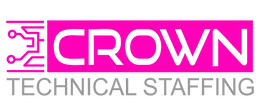CEOs, Operational Leaders, and Engineering Executives have all grappled with the notion that they’d like to have a company or team that can produce products faster, and more cost-efficient, with the ability to remain flexible/agile in their approach.
It’s often described as the most ideal scenario, yet companies equipped with the right tools, personnel, and training can get there. In our 12th installment of “Engineering 365,” we will explore how manufacturers are betting big on Artificial Intelligence (AI) and the Smart Technology revolution.
Manufacturers are currently experiencing a talent shortage and skill mismatch, impacting their workforce and casting long shadows over production capacity. A whopping 90% of industrial companies are predicted to be feeling the bite of this skills shortage by 2025, according to the World Economic Forum. To weather this storm, manufacturers are turning to technology – not as a replacement for their workforce, but as a tool for transformation, facilitating meaningful work, boosting safety, and attracting new talent.
What are intelligent products?
First, let’s discuss what they’re not. Generally, products have two highly distinct classifications: static and dynamic.
A typical product is static and often has rule-based personalization. It does exactly what it’s programmed to do, typically following a cause-and-effect pattern, like a light switch. Flip it up—cause—and the light turns on—effect.
Alternatively, an intelligent product has ML (Machine Learning) personalization, which is, technology that uses algorithms and predictive analytics to determine and display the most relevant and complete experiences. Intelligent products have enormous potential to give employees a much better experience on production lines and shop floors, in administrative offices, and supply chains. The ability to gather and monitor their data, then analyze and transform that information into knowledge that can continuously optimize the product to remain relevant and dynamic, is at the forefront of this new-age Industrial Revolution.
Want to Hire and Keep More Workers?
Automate.
One of the best examples of intelligent automation in action is the deployment of autonomous guided vehicles (AGVs). These AGVs are revolutionizing material handling, moving parts between processing stations without any need for human intervention. By automating this traditionally labor-intensive task, manufacturers can not only increase efficiency but also reduce the risk of work-related injuries, making the workplace safer and more appealing.
- Smart Technology for Renewable Energies, Oil & Gas and Chemicals Companies
More manufacturers are using the application of intelligent algorithms to monitor production thresholds. By adding intelligence to this process, manufacturers can ensure that adjustments are made automatically when thresholds approach critical levels. This reduces the risk of human error and the need for constant manual oversight, allowing employees to focus on higher-level tasks.
Safety Concerns?
Malfunctioning equipment and sudden hazards can lead to accidents, injuries, and unplanned downtime. Analyzing historical performance and maintenance data, plus real-time updates from safety sensors, can highlight potential problems before they happen.
Examples of intelligent safety improvements:
- Employ Internet of Things (IoT) and smart sensors to set up a digital perimeter around hazardous processes and reduce the chance of injury.
- Use AI/ML and computer vision to proactively find security or safety concerns before they cause an incident.
With AI-enabled predictive maintenance, manufacturers can identify what problems their equipment will experience and when these problems may occur.
Combatting Burnout using AI
Intelligent Products can come into play by balancing employee responsibilities, informing shift planning, and predicting demand fluctuations.
Examples of intelligent worker insights:
- An AI algorithm could analyze data from scheduling software, production equipment, and employee surveys to pinpoint the best utilization levels and generate assignments automatically.
- Employee burnout could be predicted by monitoring employee surveys, performance metrics, and absenteeism rates, and feedback and recommendations could be generated to help adjust and prevent stress.
Case Study
Schneider Electric’s Lexington plant produces more than 16,000 finished products. It’s a large and complex operation — and as it continued to expand, the team found that traditional paper-based reporting was holding them back. They began looking for a way to digitize and harness data to unlock silos, drive process efficiency, and advance their sustainability ambitions worldwide. They utilized AVEVA technology to reduce paperwork and manual processes by 90%. As a result, the team was able to drive new levels of process efficiency while helping to advance their sustainability ambitions.
In conclusion, manufacturers are adopting automation technology not merely as a solution to optimize their operations but as a strategic approach to attracting and retaining talent. By eliminating mundane tasks and creating more engaging, meaningful, and safe roles, manufacturers are positioning themselves as attractive workplaces for a new generation of workers. Smart Technology, once seen as a threat to job security, is now being recognized as a catalyst for job evolution, driving the manufacturing sector toward a future defined by growth, innovation, and workforce satisfaction.
So How Can We Help You…
CTS carries out deep talent mapping, nationwide, to ensure our shortlists contain only the very best leaders for your Engineering and Manufacturing teams.
1. We help to attract and retain Mechanical, Electrical, Manufacturing, Project, Process, and Quality Engineers in addition to the frontline leaders for these teams.
2. Reduce the cost of acquiring and training new hires by supporting and enhancing the efforts of your onboarding team for the first 90 days.
3. Provide a zero-risk and no-cost assessment of your hiring strategies with a 15-minute consultation.


